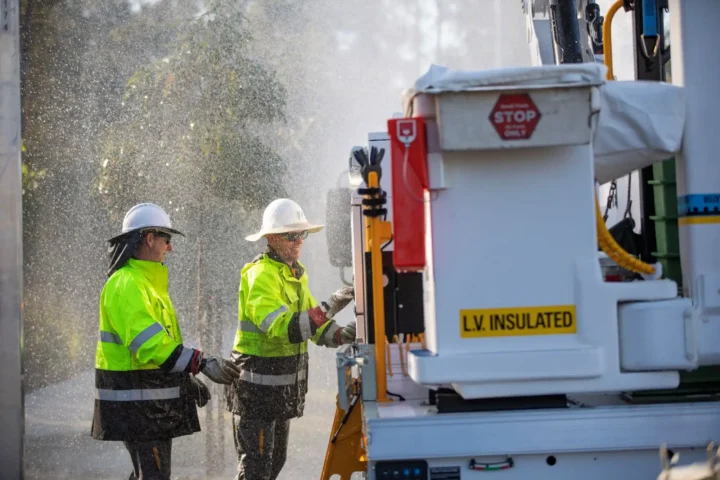Scientists have calculated when Earth’s oxygen-rich atmosphere will disappear, and the countdown has already begun. Using supercomputer models that simulated Earth’s climate system 400,000 times, researchers from Toho University and Georgia Institute of Technology discovered our planet’s oxygen will plummet in approximately one billion years.
The Science Behind Earth’s Oxygen Timeline
The study, published in Nature Geoscience, used coupled biogeochemistry and climate models to peer into Earth’s distant future. Assistant Professor Kazumi Ozaki from Toho University and Associate Professor Christopher Reinhard from Georgia Institute of Technology ran their simulations with varying parameters to account for uncertainty.
“Using a stochastic approach, we find that the mean future lifespan of Earth’s atmosphere, with oxygen levels more than 1% of the present atmospheric level, is 1.08 ± 0.14 billion years (1σ). The model projects that a deoxygenation of the atmosphere, with atmospheric O2 dropping sharply to Archaean-like levels.”
The models show that “Earth’s present atmosphere is made up of 78% nitrogen, 21% oxygen, 0.9% argon, and 0.1% other gases, including carbon dioxide, methane, water vapor and neon.” This oxygen-rich composition won’t last forever.
How the Sun Triggers Earth’s Oxygen Loss
The primary driver of this atmospheric transformation lies in our aging Sun. As main-sequence stars like our Sun evolve, they gradually become brighter and hotter. Over the next billion years, solar luminosity will increase by about 10%, fundamentally altering Earth’s climate and atmospheric chemistry.
“For many years, the lifespan of Earth’s biosphere has been discussed based on scientific knowledge about the steady brightening of the Sun and global carbonate-silicate geochemical cycle,” says Ozaki. “One of the corollaries of such a theoretical framework is a continuous decline in atmospheric CO2 levels and global warming on geological timescales.”
The sequence unfolds as follows:
- Solar brightening heats Earth’s surface
- Accelerated weathering removes CO₂ from the atmosphere
- Photosynthesis collapses when CO₂ drops below critical thresholds
- Oxygen production ceases as plants die off
- Rapid deoxygenation occurs within about 10,000 years
“While the end of oxygen is still a billion years away, when the depletion begins to take hold, it will occur rather rapidly, in about 10,000 years.”
After the Great Deoxygenation Event
Following this atmospheric collapse, Earth will resemble its ancient self before the Great Oxidation Event 2.5 billion years ago. “This mass extinction event will then prompt oxygen levels to drop sharply to conditions similar to that of the early Earth before the Great Oxidation Event around 2.5 billion years ago.”
The post-oxygen Earth will be characterized by:
- Extremely low oxygen levels (about one million times less than today)
- High methane concentrations
- Absence of an ozone layer
- Dominance of anaerobic microorganisms
“The atmosphere will return to a state similar to before the Great Oxidation Event, which happened about 2.4 billion years ago,” explains Christopher Reinhard, one of the lead researchers on the study published in Nature Geoscience.
Current Climate Context
While Earth’s oxygen depletion lies far in the future, current climate trends show how atmospheric composition affects planetary habitability. “The atmospheric concentrations of carbon dioxide and methane reached record levels in 2024, at 422.1 ppm and 1897 ppb respectively.”
“The record temperature in 2024 was boosted by a strong El Niño which peaked at the start of the year. In every month between June 2023 and December 2024, monthly average global temperatures exceeded all monthly records prior to 2023.”
These current changes, driven by human activity, operate on much shorter timescales than the billion-year oxygen depletion but demonstrate how quickly atmospheric and climate systems can shift.
Implications for Space Exploration
Similar Posts
This research fundamentally changes how we search for life beyond Earth. Oxygen has long been considered a prime biosignature for detecting life on exoplanets. However, this study shows that planets may harbor life during non-oxygenated phases.
“Our results contribute to a deeper knowledge of the biological factors controlling the long-term evolution of Earth’s atmosphere,” Ozaki says. “They offer a better mechanistic understanding of the factors that promote oxygenation of the atmospheres of Earth-like planets beyond our solar system.”
Scientists now recognize the need to search for alternative biosignatures like methane, nitrous oxide, or other gas combinations that indicate biological activity in low-oxygen environments.
Long-term Perspectives and Guidance
Earth’s finite oxygen window – representing only 20-30% of our planet’s total lifespan – offers profound insights for long-term thinking and planetary stewardship:
Technology and Adaptation
- Development of closed-loop life support systems
- Advanced atmospheric engineering concepts
- Space colonization as a backup strategy
Environmental Stewardship
While the billion-year timeline seems distant, current human activities affect Earth’s immediate habitability. “Around 90% of the energy trapped by greenhouse gases in the Earth system is stored in the ocean. In 2024, ocean heat content reached its highest level in the 65-year observational record.”
Understanding Earth’s long-term atmospheric evolution emphasizes the importance of:
- Protecting current biodiversity
- Maintaining stable climate systems
- Advancing renewable energy technologies
- Preserving photosynthetic ecosystems
- Addressing marine ecosystem
Philosophical Reflections
Living during Earth’s oxygen-rich era places humanity in a remarkable cosmic moment. “Earth has existed for 4.5 billion years. Complex, oxygen-dependent life has thrived for less than half that time. The research suggests the window for complex life might close with a billion years remaining before the Sun eventually expands and engulfs the inner planets.”
This knowledge encourages:
- Appreciation for our unique atmospheric conditions
- Investment in scientific research and space exploration
- Long- term thinking about human civilization’s future
- Recognition of earth’s environment fragility
Key Takeaways for the Future
The study of Earth’s oxygen fate provides crucial guidance for sustainable development and space exploration. While we cannot prevent the Sun’s natural evolution, we can:
- Protect Current Ecosystems: Photosynthetic organisms that produce our oxygen need immediate protection from human-driven climate change
- Advance Space Technology: Developing life support systems and exploring other worlds becomes increasingly important
- Think Long-term: Policy decisions should consider environmental impacts across geological timescales
- Support Scientific Research: Understanding planetary evolution helps us find life elsewhere and protect life here

The countdown to Earth’s deoxygenation has already begun, but we have an entire geological age to prepare. How we use this time will determine not just our planet’s immediate future, but potentially the long-term survival of complex life in the universe.

















